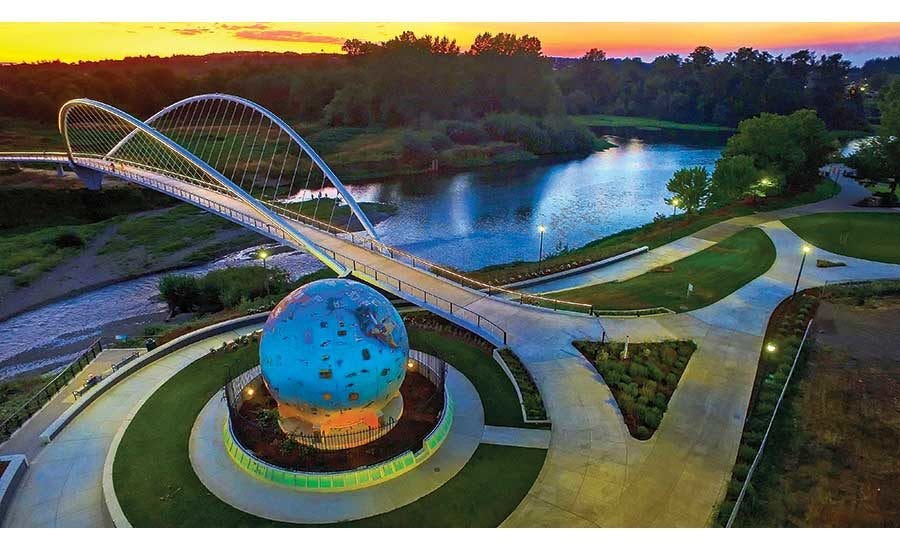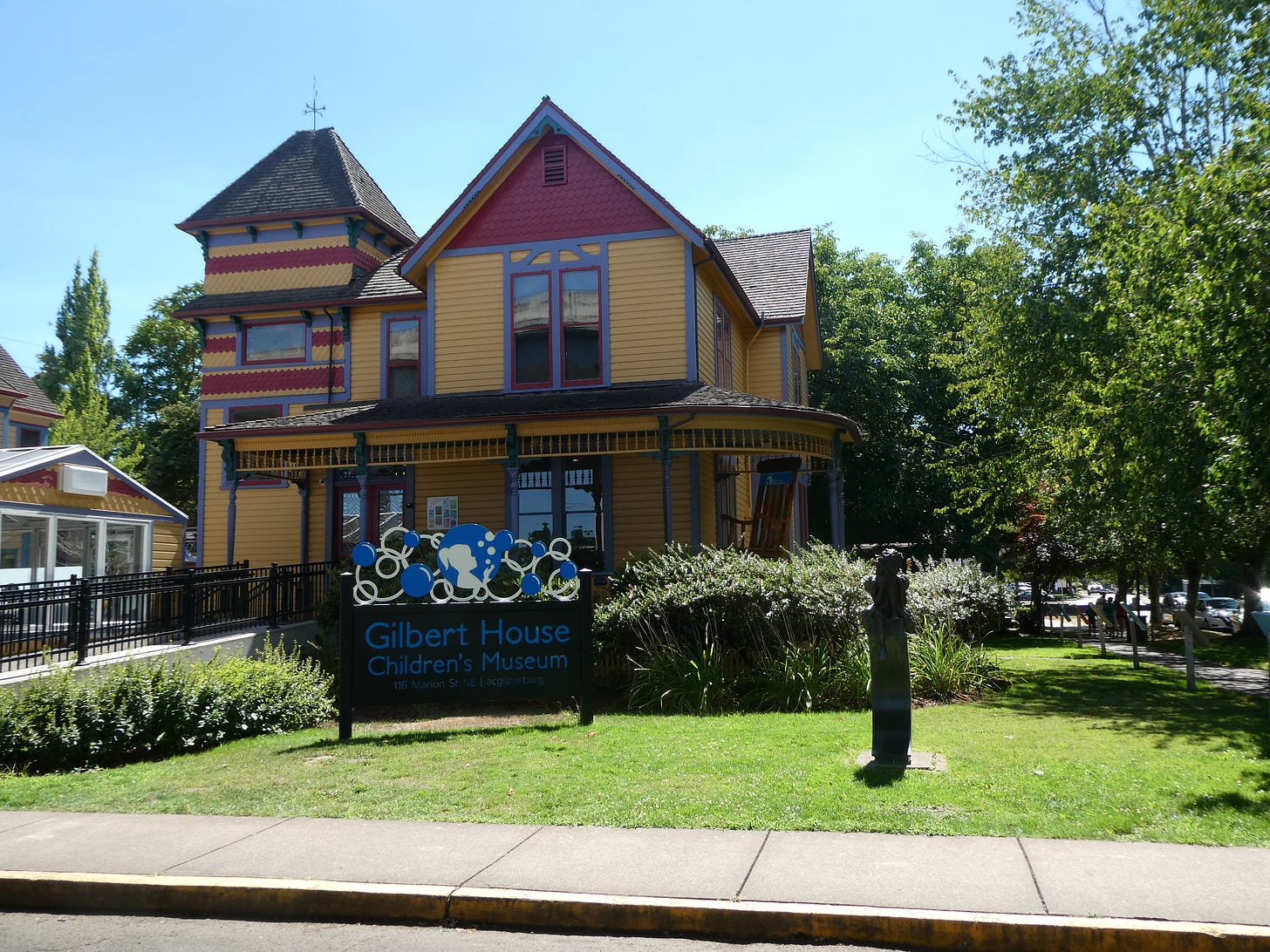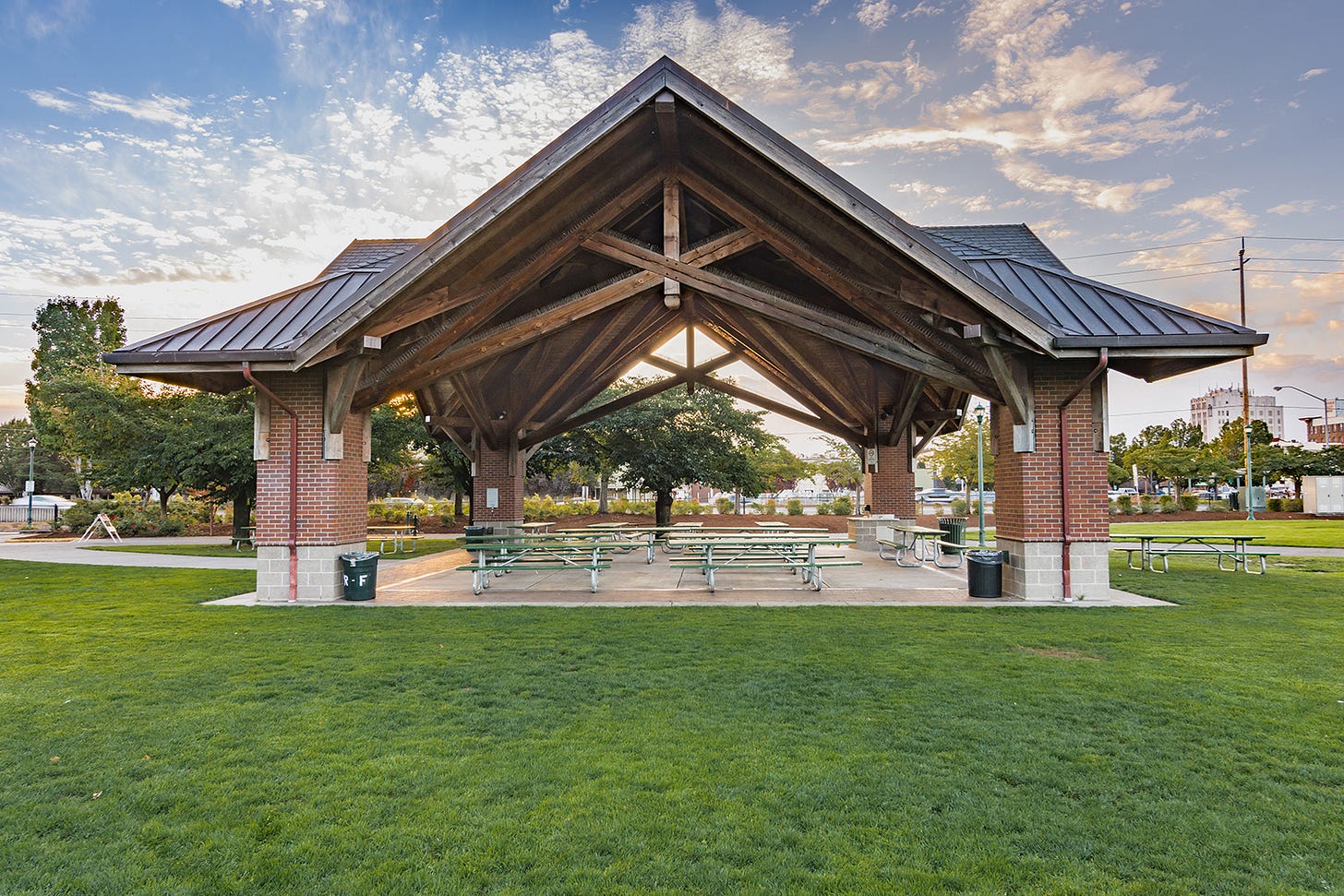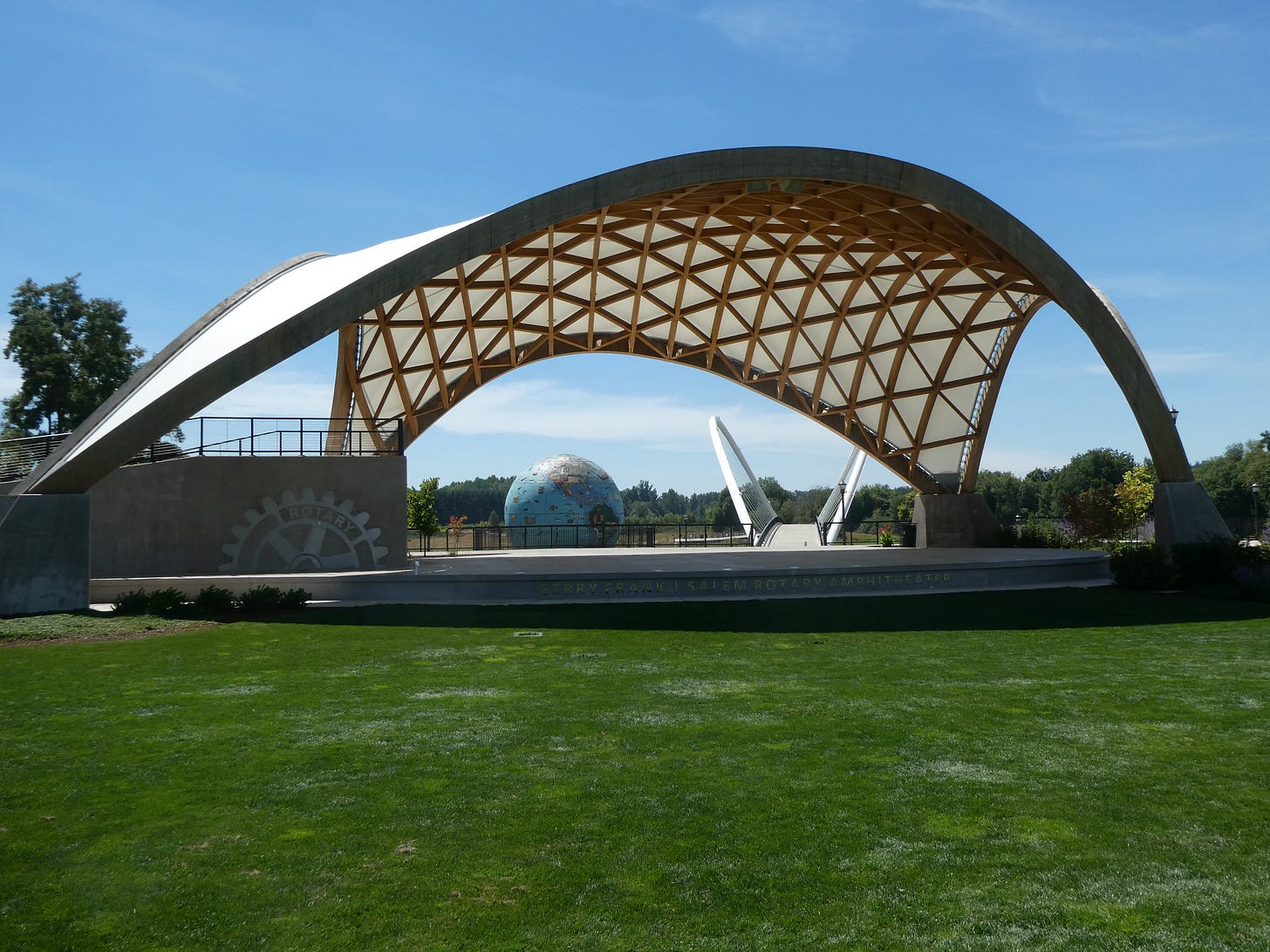Salem’s Riverfront Park has become a place for events, entertainment, learning and recreation. Thanks to the conversion of the former railroad bridge and creation of the Peter Courtney Bridge, bicyclists, runners, and pedestrians can connect to Minto-Brown Island in South Salem and Wallace Marine Park in West Salem. More than 40 years of planning and community efforts have been involved in creating what it is today.
Before European settlers arrived in this area Native Americans of the Kalapuya tribe had summer and winter camps. They created a village with as many as 400 inhabitants. As settlers moved to the area in the mid 1800’s, they harnessed the power of Pringle Creek for flour and lumber mills and the proximity of the Willamette River to transport people and products. People could travel on Ferry Street down to the waterfront, then from there they could catch the ferry across the Willamette to the developing communities of Eola and West Salem or catch a steamboat to towns/cities up and down the river.
The Oregon Pulp and Paper Plant started producing paper at a plant at Trade and Commercial in 1920. It was the second largest employer in Salem, next to state government. The plant was purchased by Boise Cascade in April of 1962. Most of the property along the river was dominated by industrial development into the 1980’s.
In 1984 the city of Salem purchased land along the riverfront and created a master plan for development of the area. In 1985 they purchased the 1887 Andrew T. Gilbert House at Marion and Water St. Andrew was the uncle of Salem born creator of the Erector Set, Alfred Carlton Gilbert. The property with the addition of other historic homes opened as the Gilbert House Children’s Museum in 1989.
While the museum was in development, the city created a proposal for the riverfront that included a hotel and conference center, a fountain, a tram along the waterfront and Court Street tunnel access under Front Street. That proposal was rejected by voters in May of 1988. The next addition to the park was the Hazel Patton Riverfront Carousel. Patton saw the community-built carousel in Missoula, Montana and organized volunteers to build one for Salem. The project started in 1995 and opened in 2001.
The Eco-Earth Globe project was a chance to use a discarded part of the Boise Cascade plant. It was a 26 foot acid ball that was used in the paper making process. The city purchased the ball when they purchased the property. Mayor Roger Gertenrich conceived of the idea of a community art project. Local art teacher and artist, Mary P.D. Heintzman served as the project director and enlisted the help of students and volunteers to cover the ball with ceramic tiles. It was designed to symbolize world peace, cultural diversity, ecology, and global awareness and was completed in 2003.
The Centennial Pavilion was added in 2005 with funding provided by the Salem Rotary Club to honor the 100 th anniversary of Rotary. It is the most rented space in the park. The connection to Wallace Marine Park was made possible with the conversion of the 1913 railroad bridge to provide for pedestrian and bicycle use. The conversion was completed in 2009.
Eight years later the opportunity to use the paths from Wallace Park through the Salem Riverfront Park to Minto Brown Island became a reality with the completion of the Peter Courtney Bridge. Courtney served as a Salem City Council member before serving in the Oregon Legislature. He was the longest serving legislator and longest serving Oregon Senate President in our state’s history.
The most recent addition is another connection to the history of Salem and Oregon. The Gerry Frank Amphitheater was another project funded by the Salem Rotary. Frank was a member of the Rotary for 60 years. He was a member of the Meier and Frank family and opened and managed the Salem store (now Macy’s). He later served as the Chief of Staff for Oregon’s U.S. Senator, Mark Hatfield. Salem Architects CB Two design was inspired by the basket weave pattern of the Kalapuya Native Americans who lived at this site before European settlers arrived.




